In this post we’ll cover network wiring standards and connectors, which are part of the OSI Layer 1 (physical). If you missed the last post about the OSI Model, make sure you read that so you have a better understanding of the concepts included in this article.
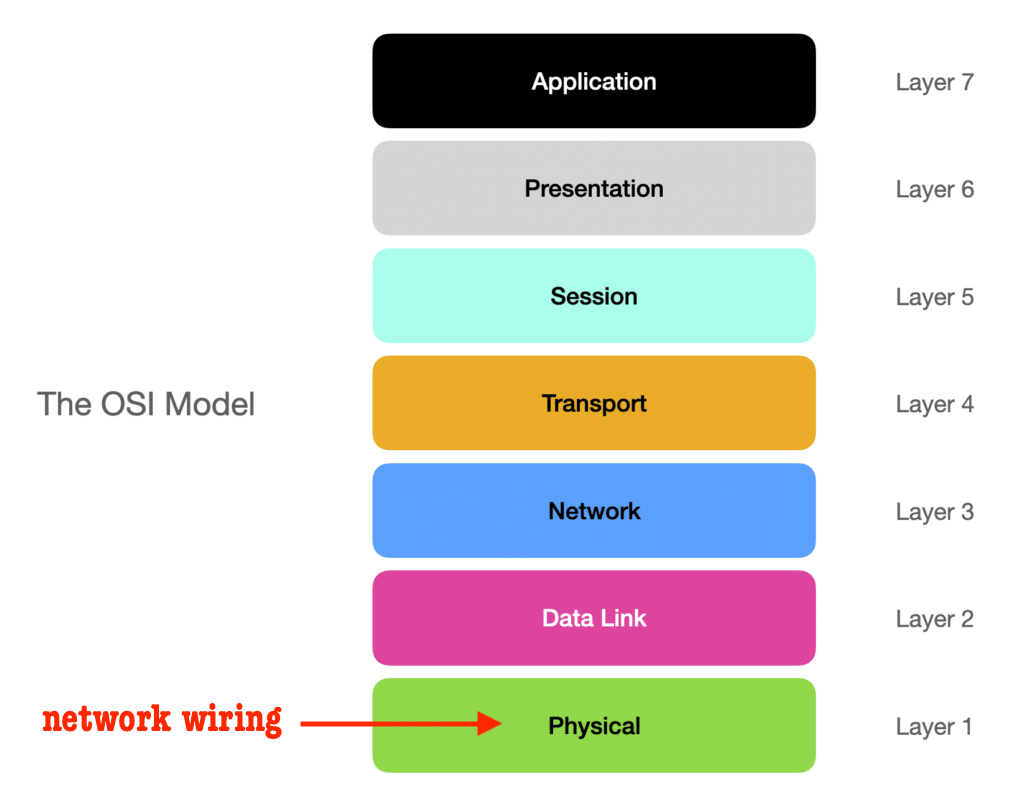
Introduction to Wiring Standards
When we talk about network wiring standards this is where concepts like Fiber, Cat5, Cat6, all of the connectors, etc come into play. I will briefly go over some of the more recent standards but if you want me to cover more connection standards, please leave a comment down below.
Cable Types
Here’s a non-exhaustive list of the most used network cables in telecommunications and data transmissions.
Copper-Based Cables
Coaxial Cable – This cable has a center conductor made of copper insulated by a plastic jacket with a braided shield over it. Coaxial cables are common for internal wiring, especially in residential homes. In fact, this cable was the primary cabling standard for delivering television services.
Twisted Pair – Named as such because it has two insulated copper wires twisted together. Twisted pair patch cables come in two types: Shielded Twisted Pair (STP), which has a metallic shield, and Unshielded Twisted Pair (UTP), which lacks shielding. UTP is a very common type of twisted pair cabling for a home network, and computer networks in general. From a distance perspective, copper has limitations of 1,500 feet for STP and 227 feet for UTP runs, which in an office environment may not be enough. In case a longer length cabling, the default fallback option is fiber. In the next paragraph we’ll review in detail different network cabling standards based on this technology.
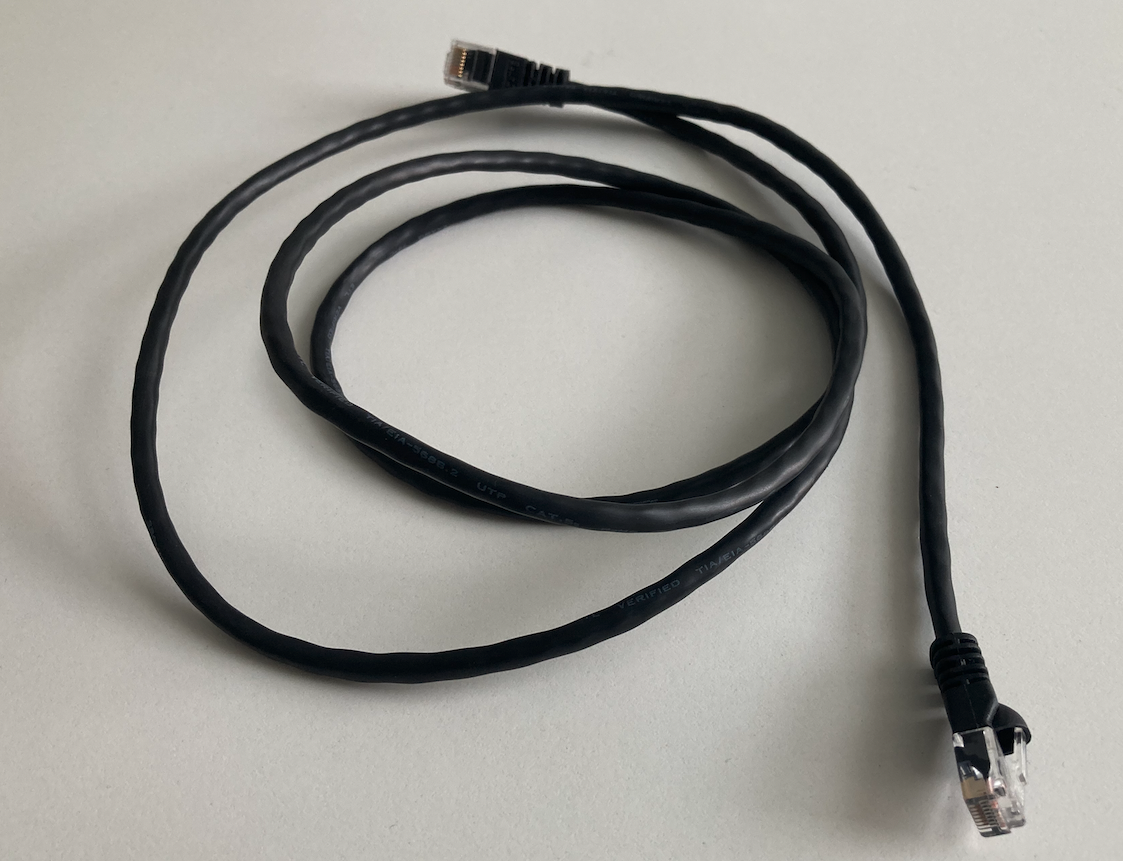
Fiber Optic Cables
A fiber optic cable is one of the most common medium of transmission for Internet connections. The main difference with copper-based cables is that fiber uses light impulses vs electric ones, so it is immune to Electromagnetic Interferences (EMI) and Radio Frequency Interferences (RFI). Fiber transmissions send light impulses either via a Light-Emitting Diode (LED) source across a plastic core, in the case of Multi-Mode Fiber (MMF), or via a laser source sent across a glass core, as is the case for Single-Mode Fiber (SMF). Single-mode fiber cabling reach longer distances than multi-mode.
Single-Mode Fiber – A typical single-mode optical fiber has a core diameter, made of glass, between 8 and 10.5 µm and a cladding diameter of 125 µm. It uses a laser to generate wavelengths of 1310 nm and 1550 nm within the core. In the case of SMF, the light travels longitudinally through the length of the fiber. SMF is extremely fast in terms of network speed and can carry signals media for longer distances than MMF. This property renders this type of fiber optic cable the backbone of the Internet with wide adoption for transatlantic connections.
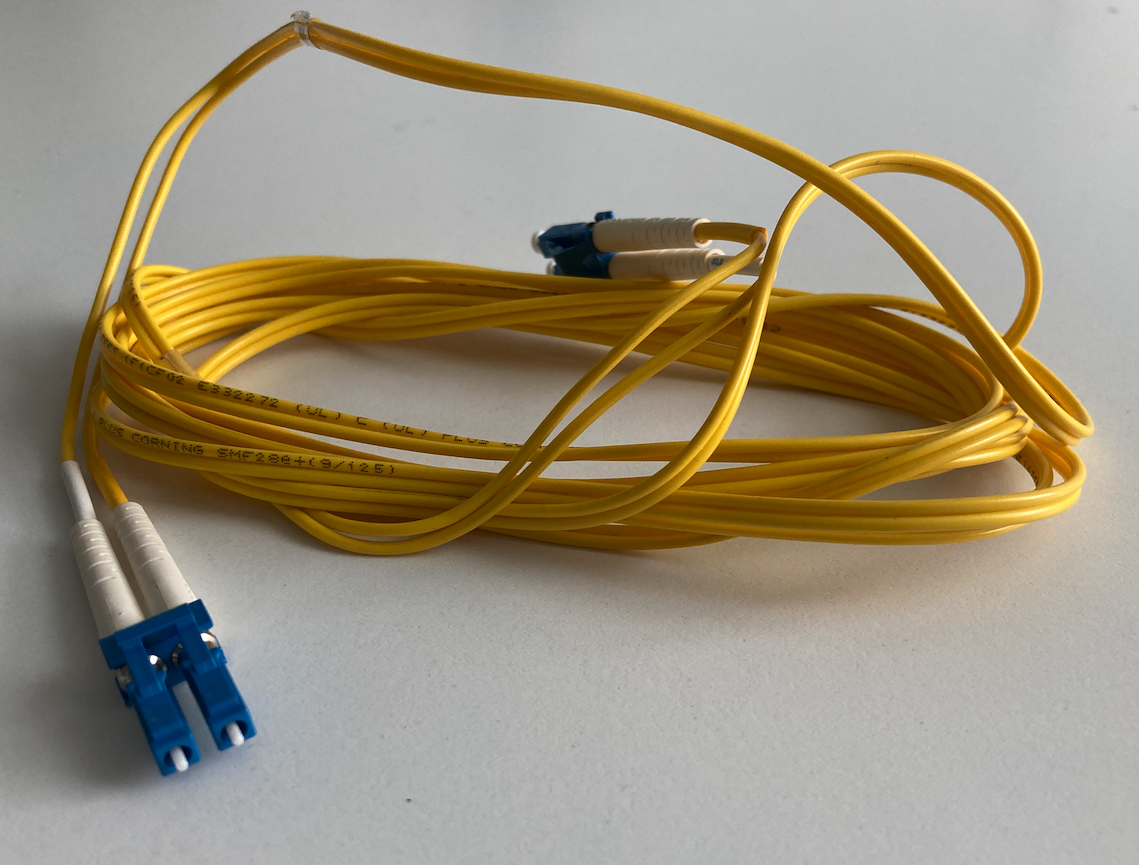
Multimode Fiber – A multi-mode fiber has a core size of 62.5 micrometres (μm) and a cladding diameter of 125 μm. MMF also uses LEDs to generate the signal and can support multiple wavelengths transmitted in parallel within its core. In a MMF cabling, the light travels at a specific angle within the core, so the signal bounces many times before reaching the receiver. For this reason, MMF installations are more flexible than their SMF counterpart. MMF supports data rates for up to 100 Gbps. However, the maximum length is usually 3000 feet, which limits this type of cabling within a campus, data center, or building. MMF is available in glass or plastic, which gives greater flexibility for installation and is less costly than SMF.
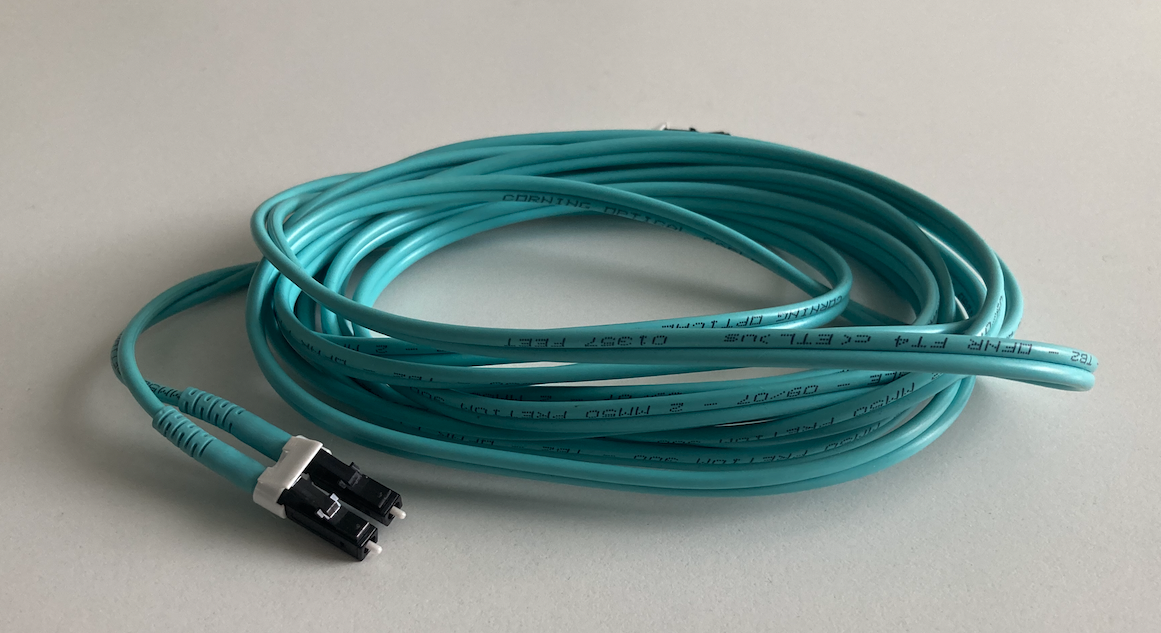
Ethernet Cables
In this section we’ll review the copper-based cables that the Ethernet standard supports. Each generation of cabling is abbreviated with the prefix “Cat” followed by a number. Cat cables started with Cat1 back in 1979 and the latest one is now on Cat8. The most popular Cat cables now installed are Cat5, Cat5E, and Cat6; some old infrastructures could be still running on Cat3.
Cat3 – This cabling has four twisted pairs for a total of 8 wires. Cat3 specifications has 3 twists per foot rated up to 16MHz. This type of cabling was popular in the 80s for telecom equipment and it supports up to 10Mbps Ethernet. For this reason, Cat3 cables are now obsolete.
Cat4 – The only main difference from Cat3 is that it is rated for 20MHz; this standard quickly became obsolete.
Cat5 – Is rated for 100MHz and reliably for speeds up to 100Mbps; it can handle up to Gigabit ethernet (1Gbps).
Cat5E (enhanced) – This is a Cat5 cable that is enhanced and capable of handling the disturbances on each pair that is typically caused by transmitting data across all four twisted pairs simultaneously. This is cabling is still commonly used in computer networks.
Cat6 – This standard was established back in 2002 and is rated for 250MHz and at smaller ranges (up to 164 feet); Cat6 can handle 10Gbps data rates, which is becoming more requested in the enterprise environments for both horizontal and vertical cabling.
Cat6A – Rated for 500MHz and supports up to 10Gbps, Cat6A supports longer cable runs (332 feet) than Cat6. Also Cat6A cables come as STP or UTP.
Less Common Ethernet Cabling Standards
Cat7 – Shielded and rated for 600MHz, this cable uses a new connector called GG45, which replaces the RJ45 connector. While GG45 connectors are compatible with RJ45 sockets, these are harder to source. As a result, terminating cables with the GG45 connector is more difficult and costly. Similar to Cat6A cables, also this cable can handle data rates up to 10Gbps and distances up to 332 feet.
Cat8 – Rated for 2000MHz and can transmit about 25 to 40Gbps data rates based on the distance. Maximum distance is 30 meters, which is about 100 feet. This category can use the standard RJ45 connector depending on whether it is Class I or Class II. Cat8 cables have a shielding.
Ethernet Cable Connectors
There are two main Ethernet connectors for copper-based standards:
RJ45 – This is the standard Ethernet connector that has been around since the late 1980s.
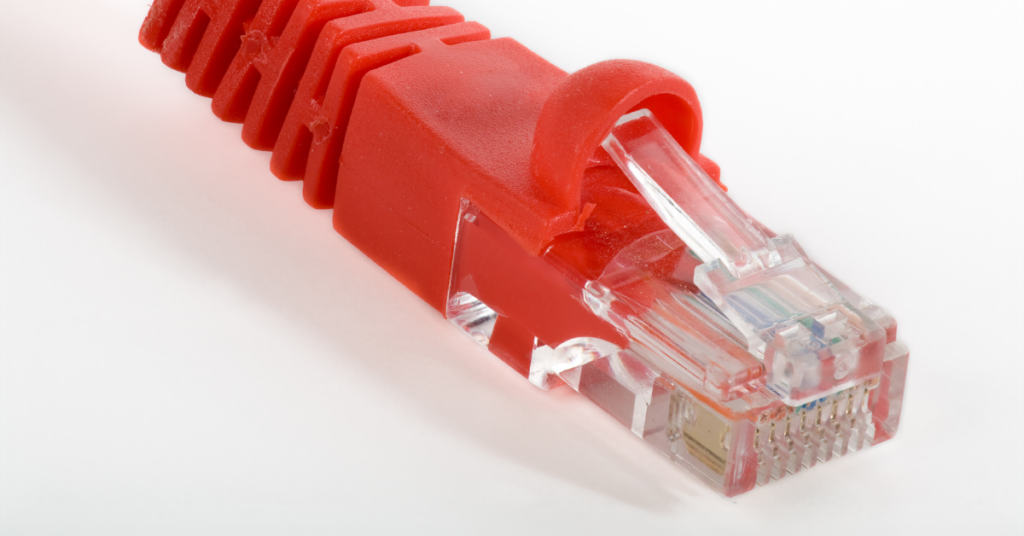
GG-45 – While this connector is compatible with RJ45 sockets, it did not receive wide adoption as it was implemented with the Cat7 standard, which was not certified by the IEEE. This led to the creation of the Cat6A standard.
There are many connectors for fiber connections. The two most common ones are:
MT-RJ – This acronym stands for Mechanical Transfer Registered Jack. This was the first fiber connector widely used in fiber installations. Early networking equipment manufacturers adopted this connector for small form factor devices due to its small size
SC – SC stands for Subscriber Connector. This fiber-optic connector was in great demand in the 2000s due to its low-cost, durability and simple installation for both point-to-point and passive optical networking.
LC – LC stands for Lucent Connector as it was developed by Lucent Technologies in the 1990s. This new style of fiber connector took over the rival MT-RJ as it was easier to terminate and splice, which are two important characteristics for field technicians.
Cat8 or Fiber?
If Cat8 supports up to 40Gbps speeds, then why is fiber so popular in 40Gbps networks? For two main reasons: distance and time. Cat8 did not become a standard until 2016, well after fiber was introduced. The other issue is that Cat8 has only a range of 100 feet whereas fiber can go over 450 feet. Another reason why companies didn’t move to Cat8 is that fiber supports data rates up to 400Gbps whereas Cat8 can only handle up to 40Gbps in short distances.
With Cat8 cables regularly available from places like Newegg at reasonable prices, this standard may become more popular than it is now. Still, Cat6 cables are still half their cost, so we still see many Cat6/6A deployments. But the need to run fiber for horizontal and vertical cabling has diminished since Cat8 is significantly cheaper and supports a standard RJ-45 connector.
Conclusion
We’ve come a long way since the era of Cat3 with 10Mbps, with Cat8 able to push up to 40Gbps (4,000x faster/more bandwidth) and SMF reaching 400Gbps data rates. We hope this post helped you learn more about the different wired network standards and connectors available.





